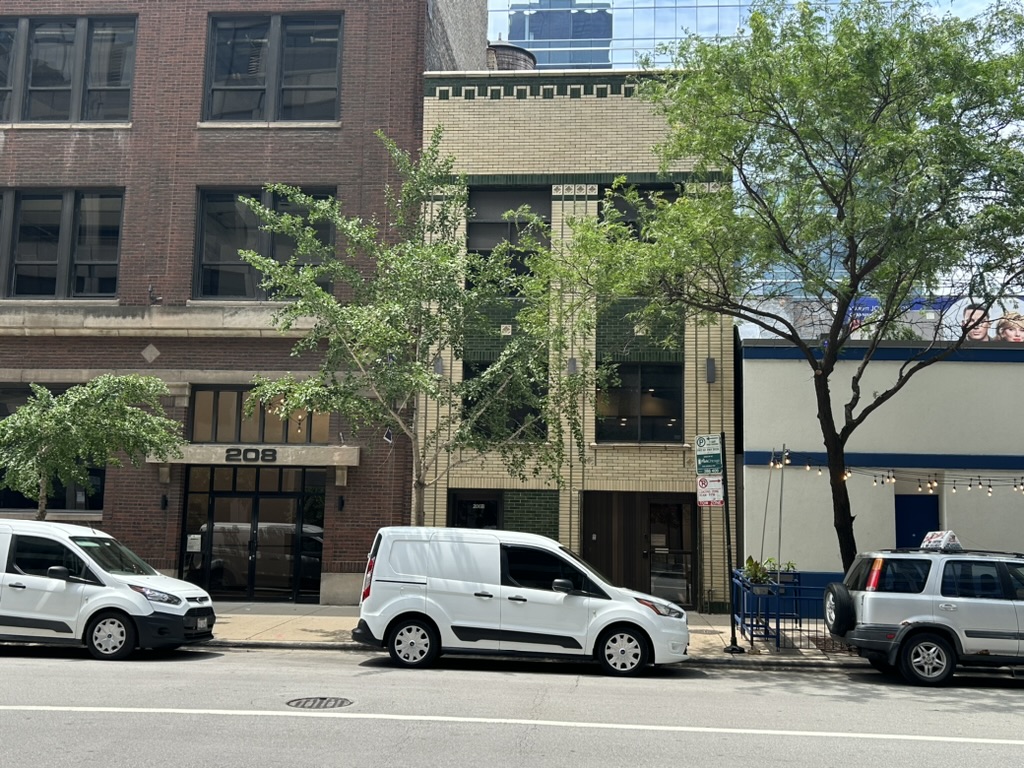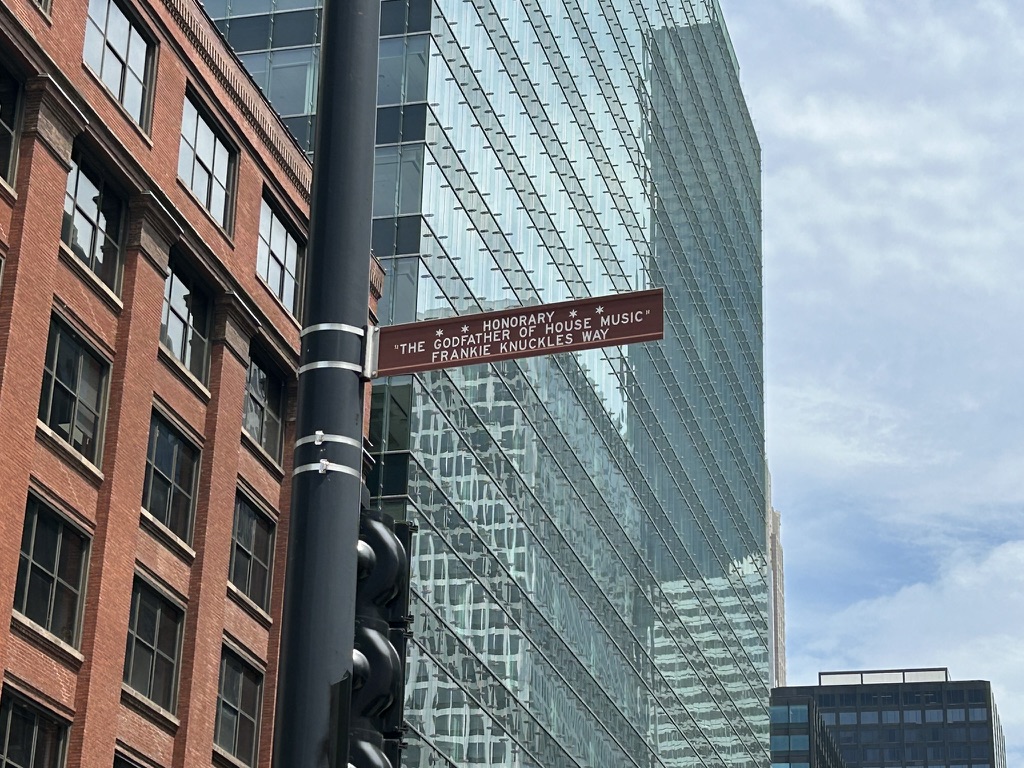
How Chicago Birthed House Music
Published on July 11, 2024
eATLAS has two self-guided Adventures of street art in the neighborhood where house music was born, courtesy of the West Central Association. One focuses exclusively on Fulton Market and the other takes you through the entire West Loop.
By Dave Lifton (@daveeatschicago)
Disco never died; it just went back underground and morphed. In fact, the seeds for disco’s replacement were being sown in Chicago as Steve Dahl was turning Comiskey Park into Ground Zero in his war against disco.
In 1977, as disco reached its commercial apex, Robert Williams, who moved from New York to bring its Black and gay dance culture to Chicago, opened The Warehouse in a former factory at 206 S. Jefferson St. Williams chose the West Loop because it was a declining industrial neighborhood without residences, and therefore no complaints about the volume.
He recruited a friend, Francis “Frankie Knuckles“ Nicholls, to move from New York and be the resident DJ. At first, Knuckles’ approach was the same as what he was doing in New York—intertwining current disco hits with earlier soul and funk records in a way that created seamless transitions between songs.
By serving fruit juice instead of liquor, The Warehouse could be open all night, and on Saturdays the party continued well into Sunday afternoon. With crowds of up to 2,000 a night, The Warehouse became a safe space for members of Chicago’s Black and gay communities to dance the night away and be themselves.

But as the ‘70s came to a close, the backlash against disco started and labels stopped releasing disco records. Knuckles had to look elsewhere for new and fresh sounds, and found them in Italian disco, German electronic music, and even gospel for its inspirational themes. His main source became Importes, Etc., a record shop operating out of a South Loop garage. The owner, Paul Weisberg, not only sold Knuckles the discs, but also added a section for the music played at the club.
Using reel-to-reel tape machines to splice songs together, extend them, and add spots for breakbeats, Knuckles created his own version of what producer Giorgio Moroder did on Donna Summer’s hits, but on the fly and in the club. In time, The Warehouse’s base extended to straight whites.
Knuckles left The Warehouse in 1982 to open his own club called The Power Plant on Goose Island. Williams lost his lease but resurfaced shortly thereafter with The Music Box at 1632 S. Indiana Ave. He hired Ron Hardy to spin, and, a year later, literally went underground, moving the club to 326 N. Lower Michigan Ave.
The friendly competition helped the genre to grow. By now, drum machines and synthesizers were becoming accessible to the public, and Knuckles was able to remix records with the beats and rhythms he created on his Roland TR-909 during his sets. This also inspired others, including Vince Lawrence (who was an usher at Disco Demolition Night), Jesse Saunders, Steve “Silk” Hurley, Chip E., and Farley “Jackmaster” Funk.
While the Warehouse’s role in birthing house music is undisputed, the origin of the term is up for debate. Some say it was because the records used to create the sound were brought from home; others noted it came from the beats made at home on the drum machine. It could also be, as Knuckles insisted, that it was shortened from “Warehouse.”
After years percolating in the clubs, house music started to make its way into stores. Saunders and Lawrence’s “On and On,” from 1984, is widely considered to be the first house record, and therefore house’s birth year. The term got a bigger audience a year later with Chip E.’s “It’s House.” Those and other singles became local hits, and got club play in Detroit and New York, where similar scenes were emerging. Saunders and Farley “Jackmaster” Funk recruited Darryl Pandy to provide vocals on 1986’s “Love Can’t Turn Around,” which became a Top 10 hit in London and earned them a spot on Top of the Pops.
By the late 80s, house had become popular in England and the Spanish island of Ibiza, and subgenres such as acid, electro, deep, and funky house sprung up based on the different sounds and beats that could be created from machines as the technology grew. These days, nearly every pop hit owes a debt to house music.
In 2004, the block where The Warehouse stood was given the honorary designation of “The Godfather of House Music” Frankie Knuckles Way, and 206 S. Jefferson St. was designated a Chicago landmark in 2023. Knuckles, who died in 2014, believed that house’s success came not from him, but the regulars at The Warehouse.

“It once was a feeling and a spirit that not me alone invented or conjured up or whatever,” he told Think Ink. “It was something that people on the dance floor created for themselves. People from that particular period and that particular era, that particular club, on that particular dance floor, under that particular sound system. It’s something that they adapted, and they made all their own.”

The Adventure starts when you say it does.
All eATLAS Adventures are designed and built by experienced eATLAS Whoa!Guides. They're always on. Always entertaining. And always ready to go.
Check out our Adventures!